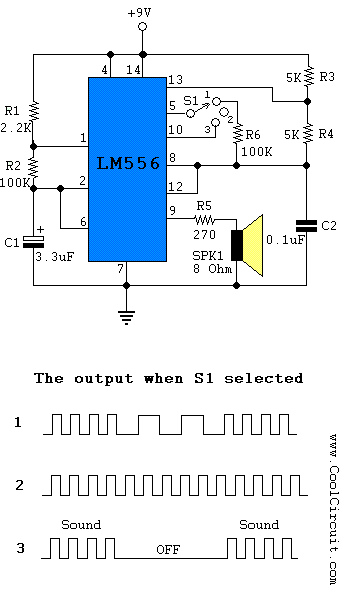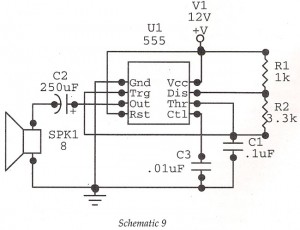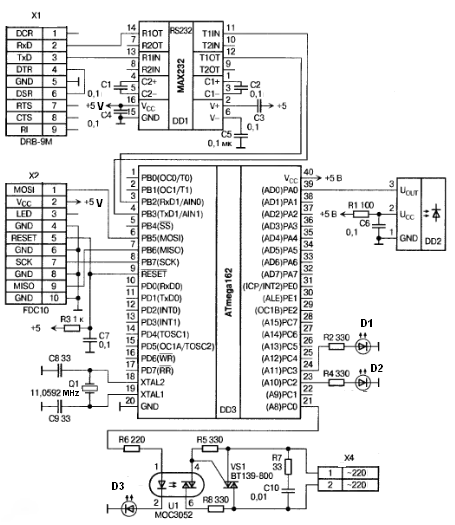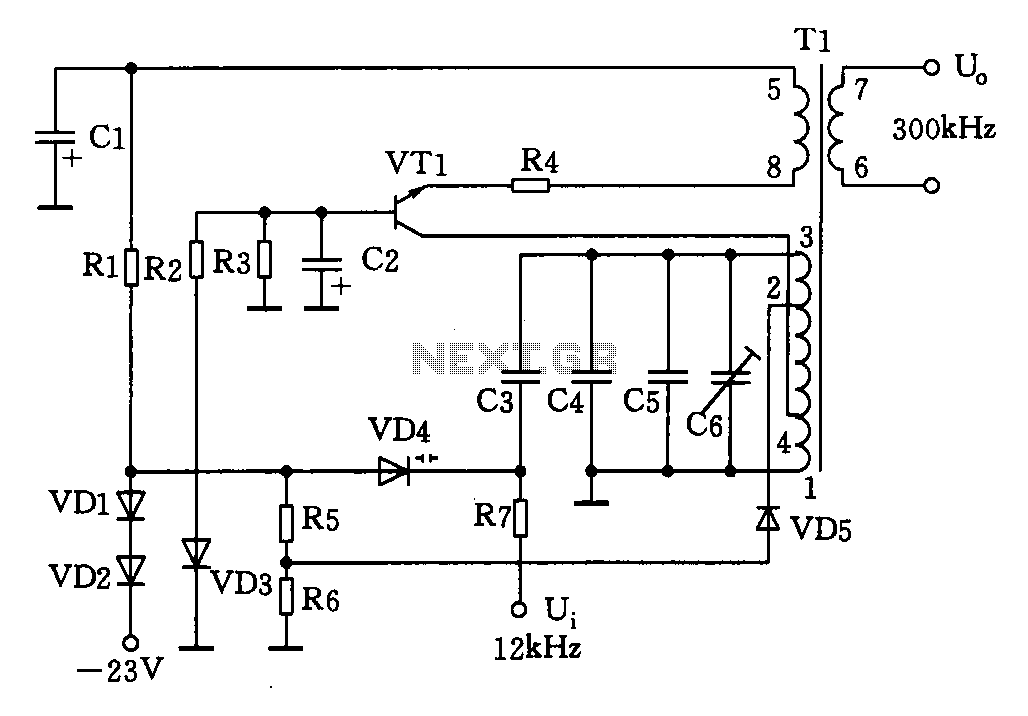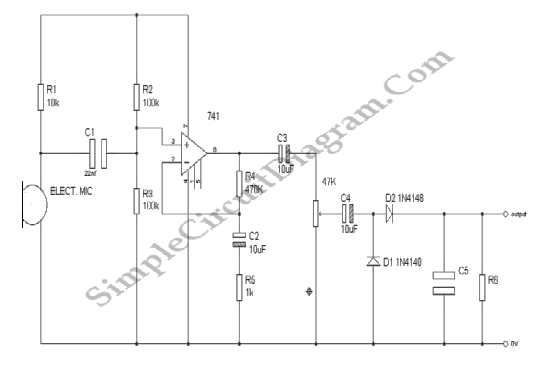
455Khz Am IF Signal Generator

An MPF102 FET oscillator drives a dual-gate MOSFET buffer. The MPF102 is configured as a Hartley oscillator. If desired, an audio voltage can be coupled to the junction of R4, R5, and C5 with an extra coupling capacitor (~1 µF) to AM modulate the signal. T1=Toko P/N RMC-202313NO.
The circuit utilizes an MPF102 field-effect transistor (FET), which is known for its low noise and high-frequency capabilities, to create a Hartley oscillator configuration. This oscillator generates a high-frequency signal based on the feedback from the inductor-capacitor (LC) tank circuit formed by the components connected to the FET. The Hartley oscillator is characterized by its use of two inductors and a capacitor, which together set the oscillation frequency.
In this design, the dual-gate MOSFET buffer serves to isolate the oscillator from subsequent stages, providing impedance matching and improving signal integrity. The dual-gate configuration allows for better control over the gain and the bandwidth of the buffer, making it suitable for driving loads that require a stable output signal.
The additional feature of coupling an audio voltage to the junction of resistors R4, R5, and capacitor C5 enables amplitude modulation (AM) of the generated signal. By integrating a coupling capacitor of approximately 1 µF, audio signals can modulate the oscillator frequency, allowing for the transmission of audio information over radio frequencies. This technique is commonly used in communication systems where audio signals need to be transmitted wirelessly.
The transformer T1, specified as Toko P/N RMC-202313NO, plays a crucial role in the circuit by providing necessary inductive coupling and possibly serving as a matching network for the output stage. Proper selection of this transformer is essential to achieve the desired frequency response and efficiency of the oscillator circuit.
Overall, this circuit design exemplifies a practical application of FET technology in generating modulated signals suitable for various electronic communication applications. An MPF102 FET oscillator drives a dual-gate MOSFET buffer. The MPF102 is configured as a Hartley oscillator. If desired, an audio voltage can be coupled to the junction of R4, R5, and C5 with an extra coupling capacitor (~l/xF) to AM modulate the signal. T1=Toko P/N RMC—202313NO.
The circuit utilizes an MPF102 field-effect transistor (FET), which is known for its low noise and high-frequency capabilities, to create a Hartley oscillator configuration. This oscillator generates a high-frequency signal based on the feedback from the inductor-capacitor (LC) tank circuit formed by the components connected to the FET. The Hartley oscillator is characterized by its use of two inductors and a capacitor, which together set the oscillation frequency.
In this design, the dual-gate MOSFET buffer serves to isolate the oscillator from subsequent stages, providing impedance matching and improving signal integrity. The dual-gate configuration allows for better control over the gain and the bandwidth of the buffer, making it suitable for driving loads that require a stable output signal.
The additional feature of coupling an audio voltage to the junction of resistors R4, R5, and capacitor C5 enables amplitude modulation (AM) of the generated signal. By integrating a coupling capacitor of approximately 1 µF, audio signals can modulate the oscillator frequency, allowing for the transmission of audio information over radio frequencies. This technique is commonly used in communication systems where audio signals need to be transmitted wirelessly.
The transformer T1, specified as Toko P/N RMC-202313NO, plays a crucial role in the circuit by providing necessary inductive coupling and possibly serving as a matching network for the output stage. Proper selection of this transformer is essential to achieve the desired frequency response and efficiency of the oscillator circuit.
Overall, this circuit design exemplifies a practical application of FET technology in generating modulated signals suitable for various electronic communication applications. An MPF102 FET oscillator drives a dual-gate MOSFET buffer. The MPF102 is configured as a Hartley oscillator. If desired, an audio voltage can be coupled to the junction of R4, R5, and C5 with an extra coupling capacitor (~l/xF) to AM modulate the signal. T1=Toko P/N RMC—202313NO.

